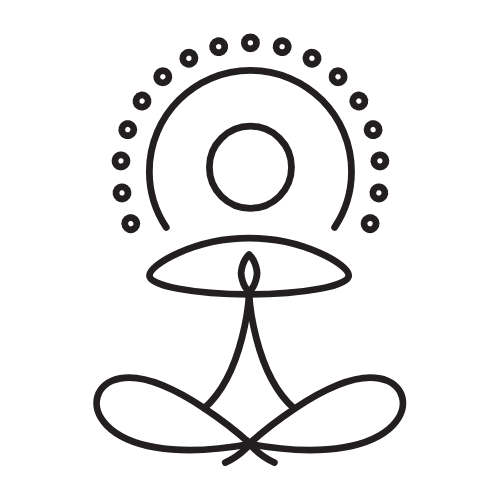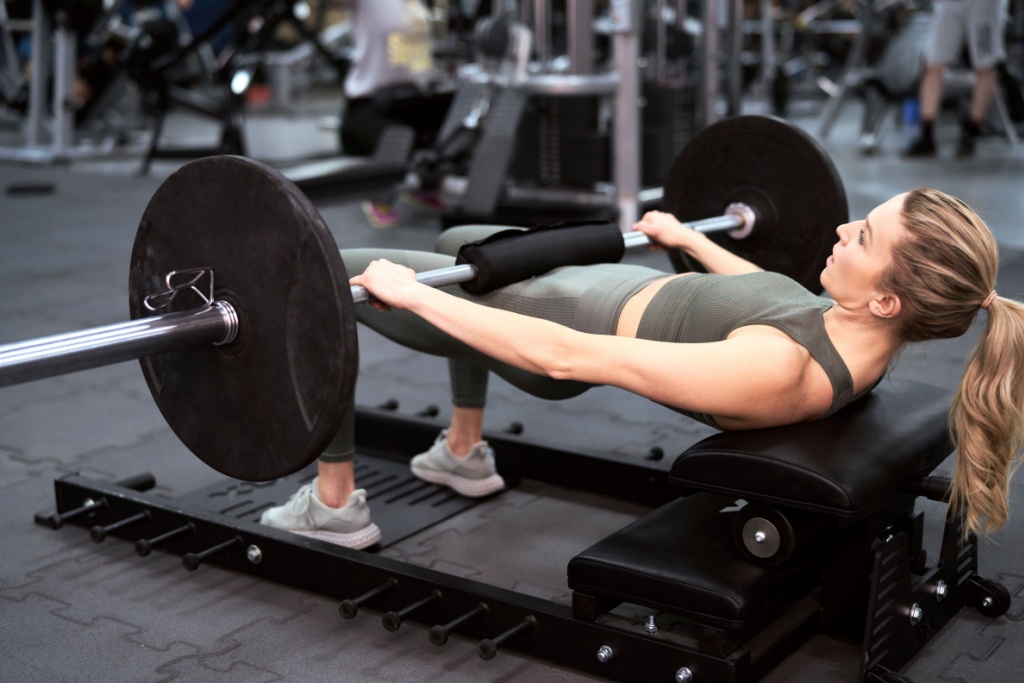Hip thrusts are a popular exercise in many strength training programs, and for good reason! They’re an amazing exercise to build strength and power in your glutes, lower body and core, which can go a long way to improving your overall athletic performance, posture and confidence. Then there’s the Kas glute bridge – a very similar exercise in many ways, but with some key differences when it comes to movement patterns and muscle focus.
Hold up, what’s a Kas glute bridge?
This glute bridge variation was popularised and named after coach Kaseem Hanson, but don’t let the name fool you: it’s got more in common with a hip thrust than a standard glute bridge. It’s a small, controlled movement designed to build your glute strength.
How do you perform a Kas glute bridge?
-
Just like you would for a barbell hip thrust, start by positioning a bench with enough space for you to sit in front of it with your legs extended – it’s best if you can put it up against a wall or solid surface to ensure it doesn’t move during your lifts.
-
Position your barbell perpendicular to the bench with some space between for you to sit down (so the barbell and the bench form a T), and sit on the floor with your back against the bench and your legs extended straight underneath the barbell. Adding weight plates to your barbell (even if they’re very light) makes this part easier so you can roll it back and forth. If you’re using a barbell alone, you’ll need to lift it into place.
-
Bend your knees so your feet are flat on the ground and position the barbell so it’s resting in your hip crease. A barbell pad can help to make this more comfortable.
-
Holding the barbell on either side of your hips with an overhand grip (palms facing the floor), push through your feet, drive your back towards the bench and squeeze your glutes to push the barbell up until your torso and thighs are parallel to the floor. Keep your eyes looking down your body towards the bar and your chin tucked to protect your back. Your hands are holding the bar simply to keep it steady – there is no power coming from your arms when you lift the bar.
-
Pause at the top of the movement, then slowly lower your hips just a few inches until your knees start to rock back towards you, then squeeze your glutes and push the bar back up to the top glute bridge position.
-
Repeat, only lowering your hips a few inches towards the floor with each rep. When you’ve completed all your reps, then you fully lower your hips back to the floor.
Kas glute bridge vs hip thrust: what’s the difference?
Although a Kas glute bridge and hip thrust are very similar, the muscle focus is slightly different. You can include both in your workout routine to challenge your lower body in different ways and keep things interesting.
They both involve setting yourself up with a bench, barbell and weight plates, and positioning yourself on the floor with the bench behind you, the barbell resting in your hip crease and you pushing the bar up by squeezing your glutes. This is the moment where these two movements part ways.
With a hip thrust, each rep involves you lowering your hips all the way back down to the floor before pushing the bar back up again. With this full lowering motion, you’ll notice that your knees will rock towards you as your hips get close to the floor. With a Kas glute bridge, each rep involves just a slight lowering of your hips – it can help to think about only lowering until you see your knees start to rock towards you.
Yes, a traditional hip thrust definitely focuses on your glutes, but pushing the bar up from that lower position means you can use more explosive power from your glutes, quads, and hamstrings too – making it an excellent compound movement.
By limiting the range of motion in a Kas glute bridge and never letting your glutes relax, you’re increasing the amount of time under tension for your glutes and really firing up that muscle group. It should feel like more of a controlled, smaller movement and a strong repetitive squeeze.
If you’re working out at home or don’t have access to a barbell, you can also perform a Kas glute bridge with a heavy dumbbell, kettlebell or weight plate resting on your hips.
Which exercise is better?
We love them both! Hip thrusts feature most commonly in YogaFokus programs, but you can easily switch them out for a Kas glute bridge whenever they appear in your workouts if you want some variety, to build glute strength or to give your hamstrings a rest. If your focus is on lifting heavy weights or performing compound movements, a hip thrust is the way to go as it allows you to push up with more power and challenge a wider range of muscles.
Power up!
Ready to begin building your strength – inside and out? Choose one of our popular strength training programs and start your 7-day free trial today.

